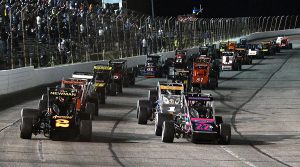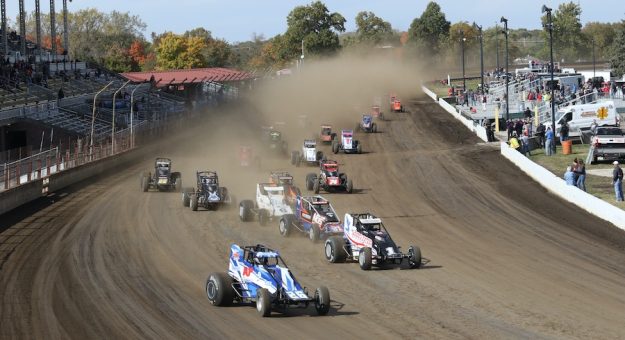Any long-standing racing enterprise will experience peaks and valleys. In the case of the USAC Silver Crown Series, these ebbs and flows have been extreme.
When it was decided that dirt-track racing was no longer a necessary or desirable facet of the national championship trail, staunch devotees were offered a thin lifeline and good wishes. A stand-alone tour was established and it was smugly assumed by some that the old classic machines, now deemed Championship Dirt Cars, would slowly fade away.
The dire prognostications did not account for the fact that men like A.J. Foyt, Al Unser, Mario Andretti, and newer stars such as Gary Bettenhausen and Pancho Carter weren’t ready to give up a racing discipline they loved.
There were rough patches, but in time the Silver Crown Series not only survived, it flourished. This outcome was abetted by good stewards who weren’t afraid to adapt. They seized upon opportunities to go pavement racing and also showed a willingness to take these cars to true short tracks. Key stakeholders also began to understand that drivers who excelled in these long-distance tests represented an untapped source of talent. Thus, a new generation of Silver Crown champions made their way to NASCAR.

It seemed as if the series was on solid footing but the drama was far from over. The adoption of the so-called new generation pavement car created a schism within the ranks and even prompted the launch of a rival series. The attempt to take this product to superspeedways was well-intentioned and those who chose to jump in certainly liked the figures that appeared on the checks they deposited at the end of the weekend.
Nonetheless, the cars were not aesthetically pleasing and some fans and participants chose to walk away. Once again, the big ground-pounders appeared to be on life support.
It was make-or-break time once again. Former racer “Indiana” Andy Hillenburg joined the USAC staff with a goal to revive what had been long touted as the club’s premier series. Hillenburg drug a show car on an open trailer everywhere he could and called and cajoled former participants to get back into the fray. Change did not happen overnight, but what was once a faint pulse grew stronger.
Car counts inched up and slowly some fresh faces began to join the old guard. There was hope.
In so many ways the Silver Crown story mirrored the saga of Lucas Oil Indianapolis Raceway Park. There was a time when IRP was truly magical. The presence of ESPN made the oval a place drivers longed to be, and fans from across the country put a visit to the track on their bucket list.
Then, slowly but surely, the light began to dim. The cameras went away, the car counts dwindled and fans headed to the exit. USAC’s decision to eliminate pavement racing from the sprint car and midget schedules didn’t help matters.
Enter Kasey Coler. IRP is the home of America’s most important drag race and the complex is owned by the National Hot Rod Ass’n. Because of this some have always suggested the oval, and the now moribund road course were mere afterthoughts. Coler has multifaceted responsibilities, but when he came on board things began to turn around.
Almost immediately he took steps to reintroduce midget racing at the oval by aggressively reaching out to willing parties. When it was clear these efforts were well-received, the sprint cars quickly returned to the schedule as well. The Silver Crown cars had never left, but the events he inherited were in the doldrums. Like the process of reviving the Silver Crown Series, getting teams and fans back to IRP has been a process.
Last season, both USAC and IRP officials had reason to celebrate the state of Silver Crown racing. The car counts for the traditional dirt mile races at Springfield and Du Quoin inched toward 40 and there was a slight but positive uptick in participation in pavement races.
Last year saw a return to World Wide Technology Raceway where the Silver Crown cars were paired with the NTT IndyCar Series. Then, for the second year in a row the championship was decided in the final race of the year, but this time at IRP.
The IRP team was not ready to rest on its laurels. Instead, they felt the time had come to make an even bigger splash. The Hoosier Hundred was the crown jewel of Silver Crown racing. In its heyday it was the second-highest paying race on the national championship trail and the biggest dirt race in the nation. But in 2020, Kyle Larson won the last race at the Indiana State Fairgrounds.
